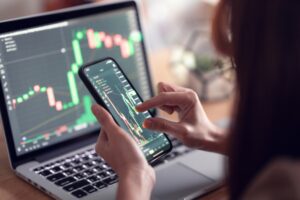
One of the most common questions people ask when they first hear about forex trading is, “How long does it take to learn this stuff?”
It’s a fair question. Forex can seem overwhelming at first with all the charts, jargon, strategies, and risk involved. And while some people pick things up quickly, others need more time. The answer really depends on your approach, how consistent you are, and what your goals look like.
There’s no exact timeline, but this post will give you a clearer idea of what to expect, how to pace yourself, and where the real learning happens.
Learning vs Mastering
Before we get into timelines, it’s good to make a quick distinction.
Learning forex means understanding how the market works, how to place trades, read charts, manage risk, and build basic strategies.
Mastering forex is a longer journey and that’s when you’re refining strategies, managing emotions under pressure, and consistently growing your account over time.
So when people ask how long it takes to learn forex, they usually mean how long until they can trade with some level of confidence, not necessarily to become a pro trader.
The Prop Firm Learning Curve
Many new traders these days learn through trading challenges or demo accounts, especially when trying to get funded by a futures prop firm or forex firm. These setups often include specific rules and risk limits, which can actually help speed up your learning because they force discipline early on.
But even with those tools, there’s no skipping the process. Everyone still has to go through the same core learning stages, even if they do it at different speeds.
A Rough Timeline of How Long It’ll Take to Learn
Here’s a general idea of how long it takes most people to learn forex at each stage, based on putting in regular study and screen time each week:
Stage
Timeframe
What You Learn
Getting started
1-4 weeks
Basic terms, how forex works, setting up a trading account, and using demo platforms
Strategy development
1-3 months
Learning technical analysis, backtesting simple strategies, and reading market trends
Risk management & discipline
2-6 months
Sticking to stop losses, lot sizing, avoiding overtrading, and managing emotions
Live trading with small risk
3-12 months
Putting it all together, revising strategies, learning from wins and losses
Consistent growth & confidence
1-2 years
Developing your style, improving results, trading with calm and focus
Some traders fast-track through this if they already have experience with markets or invest serious time each day. Others take longer, especially if they’re learning part-time or around work and family life.
What Speeds Things Up?
You can’t rush the process entirely, but there are a few things that definitely help you learn faster:
Daily screen time, even just 30–60 minutes
Journaling every trade, win or lose
Learning from mistakes instead of repeating them
Focusing on one or two currency pairs, rather than trying to master everything at once
Using a demo account properly, not just clicking buttons randomly
Consistency matters more than intensity. Two hours a week, every week, will get you further than one 10-hour binge and then nothing for a month.
What Slows You Down?
There are a few common traps that can really hold you back:
Switching strategies constantly instead of testing one properly
Ignoring risk management and blowing demo or live accounts
Trading emotionally or without a plan
Trying to “make money fast” instead of learning the skill first
Jumping into live trading too early
Forex rewards patience and discipline. The market doesn’t care how badly you want to win; it rewards structure, not speed.
So, When Can You Go Live?
There’s no rule, but here’s a useful question to ask yourself: Would I be comfortable repeating this same trade 100 times?
If the answer’s yes and your strategy includes proper risk management, then it might be time to start trading with real money, even if it’s just a small amount. Many traders begin with micro-lots or funded accounts with tight limits to reduce risk while gaining live experience.
Some also use demo accounts to complete assessments with prop firms before getting access to real capital. This allows you to keep learning under pressure, but without risking your own savings.
Are You Going to Start Learning or Not?
Forex isn’t something you learn in a weekend. But you don’t need to be an expert to get started either. With regular effort, a clear plan, and the right mindset, most people can learn the basics and start trading confidently within a few months.
After that, it’s about staying consistent, learning from your trades, and treating it like a real skill because that’s exactly what it is.
Forex is a long game. The sooner you treat learning as part of the journey, not just a box to tick, the quicker things will start to click.
Read more:
How Long Does it Take to Learn Forex






